[Daisies and Fleabanes: The Genus Erigeron East of the Cascade Mountains of Oregon and Washington]
Foreign Erigeron, Peregrine Fleabane, Subalpine Daisy, Subalpine Fleabane
Erigeron glacialis var. glacialis
Synonyms: Erigeron callianthemus, Erigeron peregrinus, Erigeorn peregrinus ssp. callianthemus, Erigeron peregrinus ssp. callianthemus var. callianthemus, Erigeron peregrinus var. angustifolius, Erigeron peregrinus var. callianthemus, Erigeron peregrinus var. eucallianthemus, Erigeron peregrinus var. scaposus, Erigeron ursinus
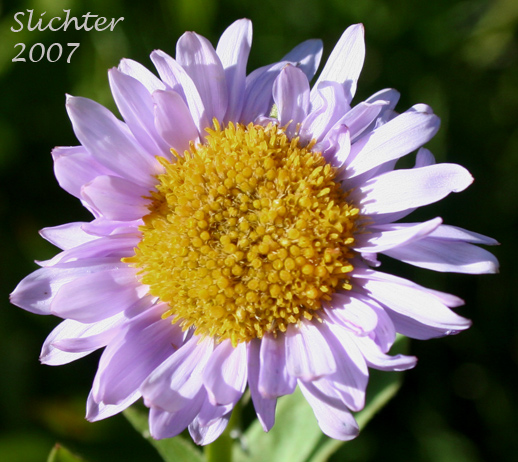
The photo above shows a close-up of the inflorescence of foreign fleabane as seen in moist meadows about 3 miles south of Hat Pt. in the Hells Canyon National Recreation Area.........June 28, 2007.
 The photo at right shows
the lower stem and basal leaves of foreign daisy from the Bowman
Trail, Eagle Cap Wilderness..........July 26, 1997.
The photo at right shows
the lower stem and basal leaves of foreign daisy from the Bowman
Trail, Eagle Cap Wilderness..........July 26, 1997.
Characteristics:
Subalpine daisy is a very attractive perennial wildflower suitable
for moist, meadow-like gardens. It is a fibrous-rooted perennial with one or
more erect stems rising up to 70 cm high from short, thick rhizomes. On larger
forms, the stems are noticeably leafy while smaller forms may lack stem leaves.
The herbage is usually green due to a lack of hairs, although the involucre
may contain small gray hairs. The basal leaves are simple and oblanceolate with
wide petioles with entire margins. The stem leaves are large but become reduced
in size upwards on the stem. They are oblanceolate, elliptical, or ovate in
shape transitioning to short, linear blades. The stem leaves have thicker petioles
which clasp the stem.
The flower heads are solitary or in small clusters at the tips
of the stems. The 30-80 ray flowers are purple to rose-purple in color and range
from 8-25 mm long and 2-4 mm wide. The yellow central disk ranges from 10-25
mm wide. The involucre ranges from 7-11 mm high with many narrow, linear bracts
about 1 mm wide, al loosely arranged and roughly equal in length.
Varieties:
Variety callianthemus: Larger, typically subalpine
plants, up to 70 cm high. Herbage generally glabrous. Basal leaves oblanceolate.
The stem leaves are not greatly reduced. Involucral bracts glandular on the
back, typically with only a few long hairs.
Variety peregrinus: Involucral bracts hairy on
the back, not glandular. Herbage soft-pubescent.
Variety scaposus: Small alpine plants, rarely
over 20 cm high. Herbage generally generally glabrous. Numerous basal leaves
with rounded to obtuse tips. Stem leaves much smaller. Involucral bracts
glandular on the back, typically with only a few long hairs.
Habitat:
Foreign fleabane may be found in moist meadows, along streams,
or in moist open forests in the mountains from elevations of 2100-3700 meters.
Range:
Subalpine Daisy may be found from The Aleutian Islands south
along the Alaskan and British Colombia coast to Washington and hence south in
the mountains through the Pacific Northwest to the mountains of California.
It extends eastward to the Rocky Mts. where it is found northwards to about
56¾N and southwards to Utah and northern New Mexico.
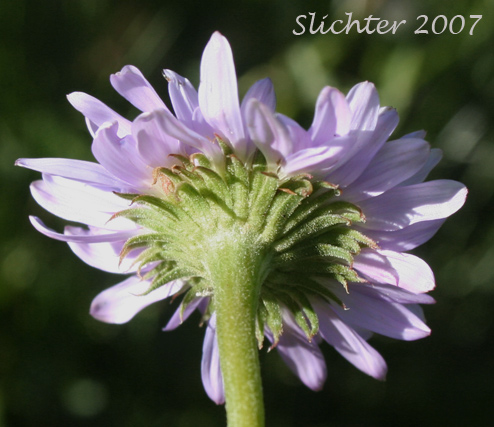 -
- 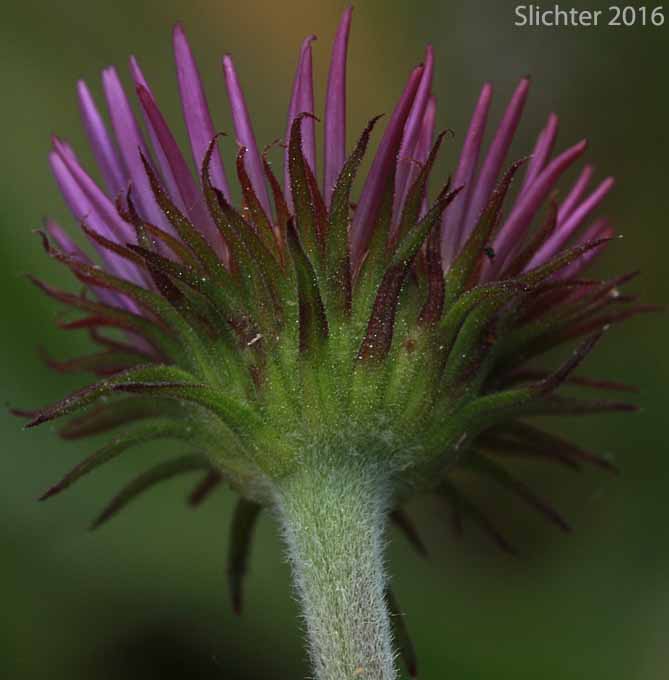
The photo at left shows a close-up of the involucral bracts below the inflorescence of foreign fleabane as seen in moist meadows about 3 miles south of Hat Pt. in the Hells Canyon National Recreation Area..........June 28, 2007. The photo at right shows a close-up of the involucral bracts of foreign daisy as seen at the trailhead for the Wapaloosie Trail #15 in the Kettle Range, Colville National Forest..........June 23, 2016. Not in both pictures that the bracts are staggered or shingled but all end at about the same point at the top of the involucre.
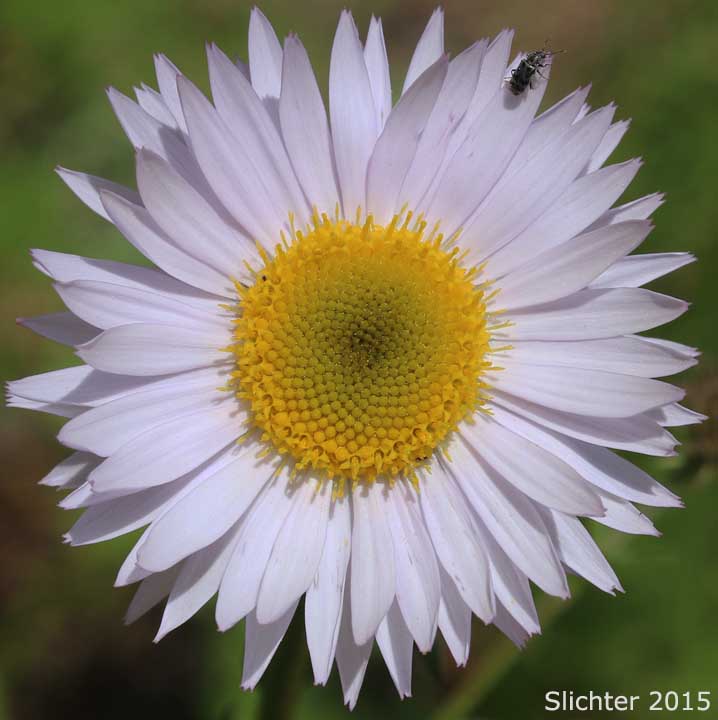 -
- 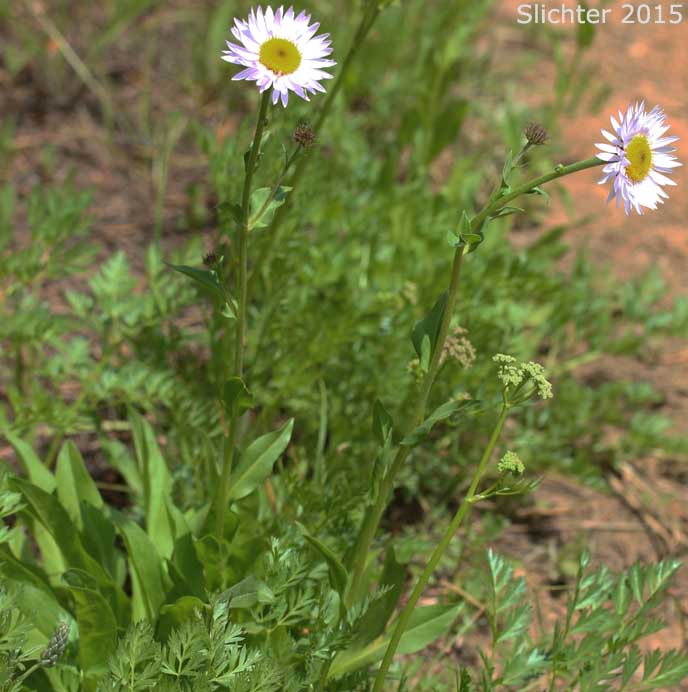 -
- 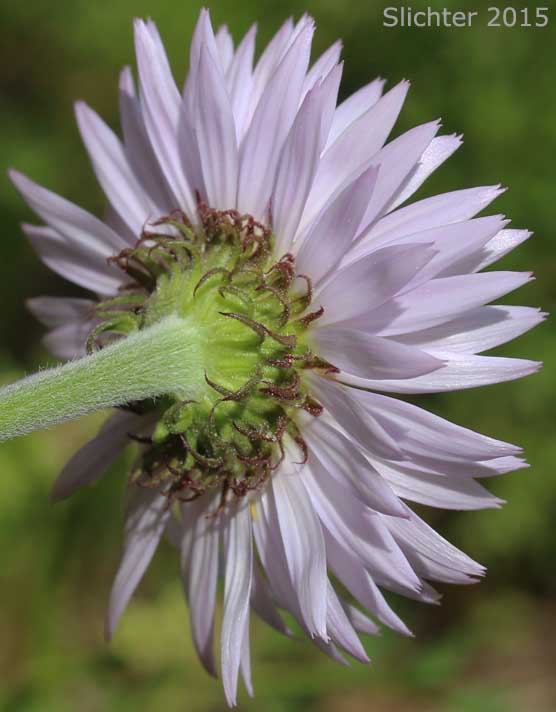
Foreign fleabane as seen in a moist area along the first half mile of the Mother Lode Mine Trail #808A to Lookout Mountain, Ochoco National Forest.........June 15, 2015.
 -
- 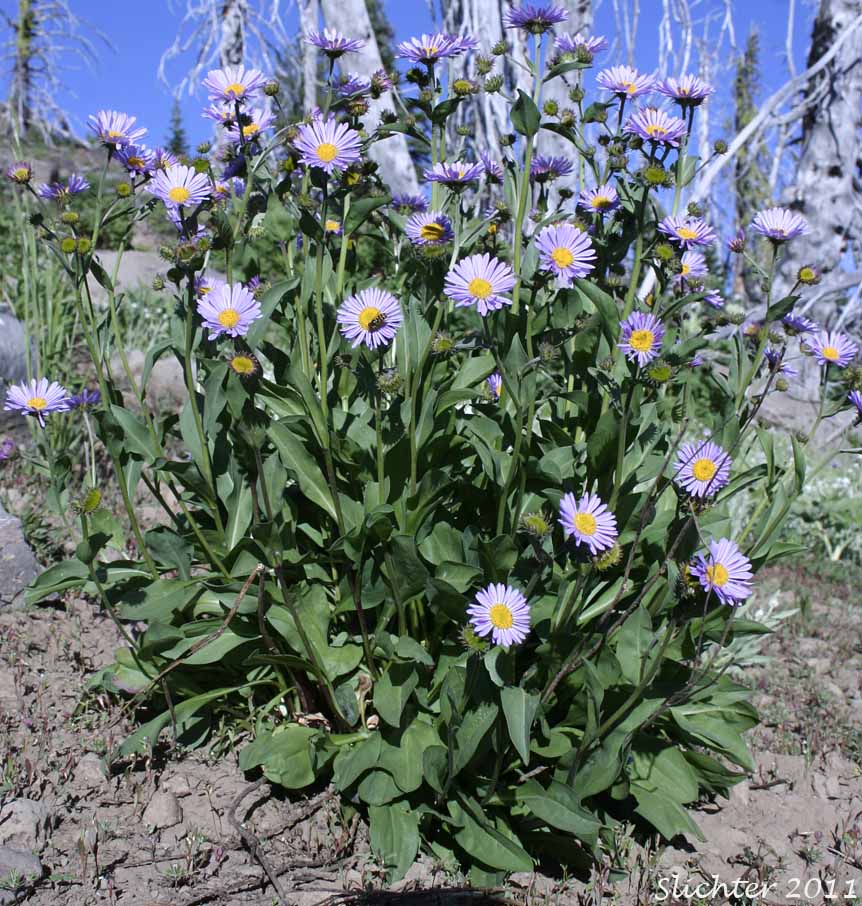
Foreign fleabane blooming at the junction of the Pine Creek Trail #201, Roads End Trail #201A, and Onion Creek Trail #368, Strawberry Mountain Wilderness. The photo at left was taken on August 3, 2011 while that at right was taken on August 18, 2011.
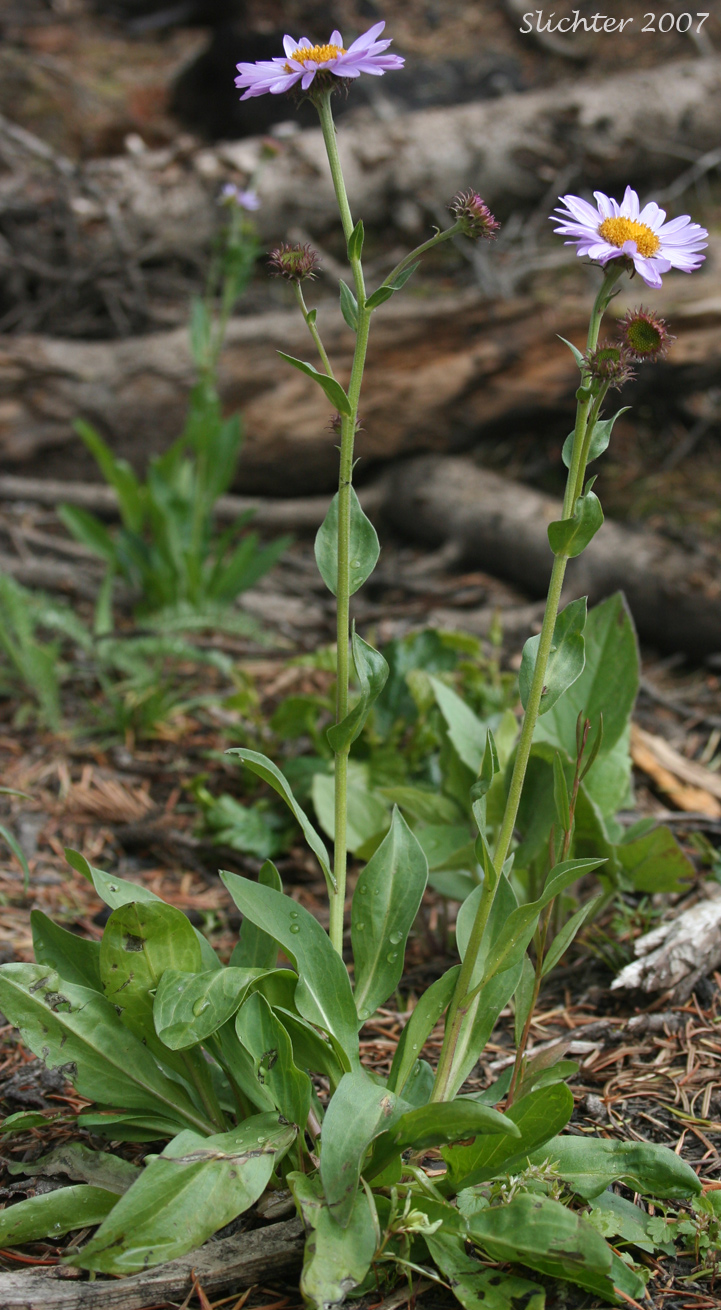 -
- 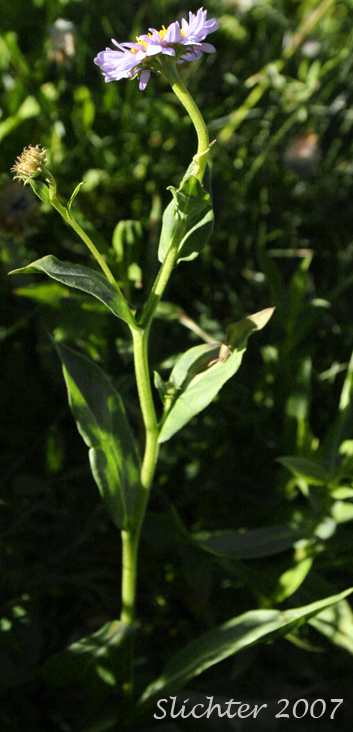 -
- 
The photo at left shows foreign fleabane as seen along Forest Road #40 in moist meadows at Forest Road #277, Umatilla National Forest...........June 25, 2007. The photo at center shows foreign fleabane as seen in moist meadows about 3 miles south of Hat Pt. in the Hells Canyon National Recreation Area..........June 28, 2007. The photo at right shows subalpine fleabane growing next to High Creek about 300 meters south of forest service road #3521, Wenatchee National Forest........July 26, 2009.
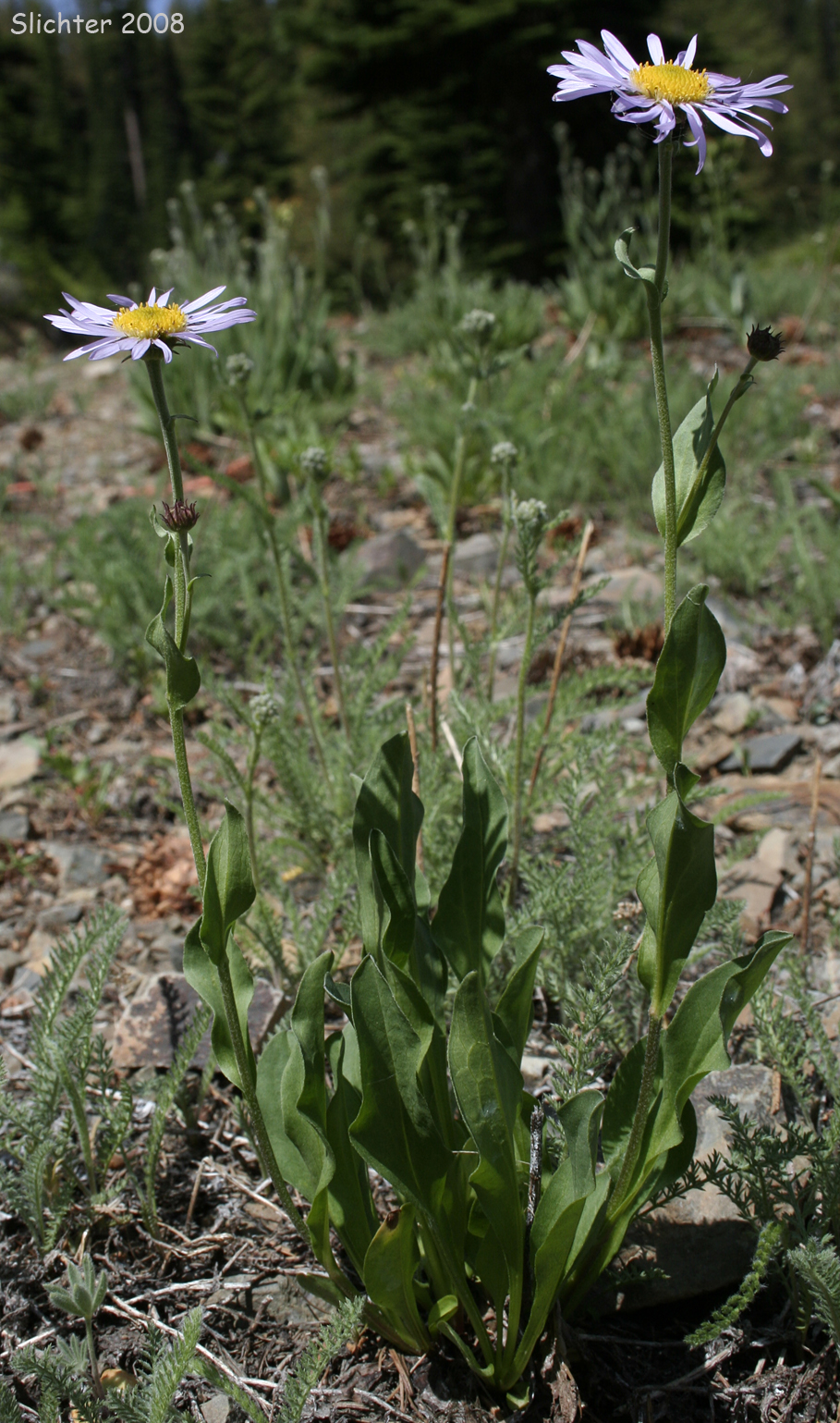 -
- 
The photo at left shows a subalpine daisy as seen along forest road #4030 on the northern slopes of Mt. Misery in the Umatilla N.F. of southeastern Oregon..........July 7, 2008. The photo at right shows subalpine daisy beginning to bloom along the Pine Creek Trail #201 near the junction with the Onion Creek Trail #368, Malheur National Forest and Strawberry Mountain Wilderness......July 7, 2023.

Basal leaf of foreign daisy (var. callianthemus) from Jackman Park, the Steens Mt. of southeastern Oregon...........June 26,
2000. Barely visible is the sparse pubescence on the dorsal leaf surface.
Paul Slichter
 The photo at right shows
the lower stem and basal leaves of foreign daisy from the Bowman
Trail, Eagle Cap Wilderness..........July 26, 1997.
The photo at right shows
the lower stem and basal leaves of foreign daisy from the Bowman
Trail, Eagle Cap Wilderness..........July 26, 1997.
